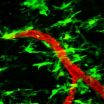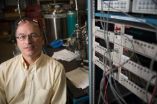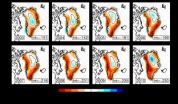(Press-News.org) BUFFALO, N.Y. -- You've already decided that you're going to pop the question. Now comes another quandary: Where to get the ring, if you're buying one?
The holidays are a busy time for engagements, and Trina Hamilton, a University at Buffalo expert in corporate responsibility, says socially minded consumers have a lot to think about when it comes to finding the right rock.
In recent years, shoppers have turned to Canadian diamonds as news reports and movies exposed the diamond trade's role in fueling armed conflicts in developing countries. (Think "Blood Diamond," the 2006 thriller featuring Leonardo DiCaprio as a diamond smuggler in 1990s Sierra Leone.)
But Hamilton says choosing an ethical diamond is more complicated than avoiding war zone stones.
"Many people who are planning proposals choose Canadian diamonds because they don't want anything tarnishing the story of their engagement, but doing the least harm doesn't mean you're doing the most good," says Hamilton, an assistant professor of geography.
Ethical options for today's consumers extend beyond Canadian diamonds.
In a survey of 94 diamond retailers who promote themselves as ethical sellers, Hamilton and her students found that 13 were marketing ethical stones from countries other than Canada, including Botswana and Namibia. These two African nations have been recognized for using the diamond trade and associated revenues to create jobs and fight poverty.
Even in Sierra Leone, there are efforts to develop "fair trade" diamonds, and some analysts suggest that diamond exports have helped to fund reconstruction since the country's civil war ended in 2002, Hamilton says.
"Consumers need to decide what they want their money to do," Hamilton says. "Starting in the late 1990s, Canada quickly cornered the ethical market. But now there's a bit of a backlash: People have concluded that it's not addressing the issue of development of these African countries that suffered during the conflicts, and they're also starting to question whether Canadian diamonds are as conflict-free as is often claimed."
If you're shopping for a diamond this holiday season, here are some tips from Hamilton:
Look Beyond 'Conflict-Free': Many retailers boast that they comply with the Kimberley Process, a certification scheme designed to prevent the trade of "conflict diamonds." But Hamilton says this is the bare minimum. Because the Kimberley Process defines "conflict" very narrowly, it doesn't address concerns like government-fueled human rights abuses; labor standards; or environmental impacts, she says. Shoppers should be aware that countries without Kimberly-designated conflicts are not necessarily free of other problems.
Don't Settle For a Gift to Charity: Twenty-one of the retailers Hamilton surveyed donate a percentage of profits to charity. This may be a commendable add-on, but in and of itself, "it's not addressing industry practices within the diamond trade," Hamilton says. Finding retailers who are also engaged in initiatives to improve social and environmental standards within the industry may be a more effective way to produce social change, she says.
Remember That Activism Matters: Consumer spending is an important way to influence business decisions, but people who are passionate about a cause shouldn't stop there, Hamilton says. Protests, and other forms of direct activism, are also a critical part of changing the industry and addressing broader issues of social and environmental justice, she says.
Hamilton emphasizes that there's no single answer as to what constitutes an ethical diamond. Consumers will arrive at different decisions about what to buy based on their specific social and environmental concerns, she says. She notes that even in Canada -- where the diamond in Hamilton's engagement ring was sourced -- mining of the stones has caused some strife between companies and indigenous communities.
Besides diamonds sourced from countries of interest, Hamilton's survey of 94 sellers found that nine offered recycled diamonds, such as antiques, while six sold lab-created diamonds. The survey -- part of an ongoing study -- was based on retailer websites, with the researchers doing an in-depth analysis to identify product offerings, marketing strategies and discussion of ethical issues.
Hamilton's partners on the project include UB PhD candidate Seth Cavello and UB undergraduate student Christine Tjahjadi-Lopez. The work was supported by the UB Humanities Institute, Baldy Center for Law and Social Policy, and Canadian-American Studies Committee.
INFORMATION: END
Tension is the theme running through the new consensus statement issued by the Hinxton Group, an international working group on stem cell research and regulation. Specifically, tension between intellectual property policies and scientific norms of free exchange, but also between eastern and western cultures, national and international interests, and privatized vs. nationalized health care systems.
The consensus, titled Statement on Data and Materials Sharing and Intellectual Property in Pluripotent Stem Cell Science in Japan and China, was released on the Hinxton Group's ...
UNIVERSITY PARK, Pa. -- Sibling conflict represents parents' number one concern and complaint about family life, but a new prevention program -- designed and carried out by researchers at Penn State -- demonstrates that siblings of elementary-school age can learn to get along. In doing so, they can improve their future health and well-being.
"Negative sibling relationships are strongly linked to aggressive, anti-social and delinquent behaviors, including substance use," said Mark Feinberg, research professor in the Prevention Research Center for the Promotion of Human ...
High-resolution real-time images show in mice how nerves may be damaged during the earliest stages of multiple sclerosis. The results suggest that the critical step happens when fibrinogen, a blood-clotting protein, leaks into the central nervous system and activates immune cells called microglia.
"We have shown that fibrinogen is the trigger," said Katerina Akassoglou, Ph.D., an associate investigator at the Gladstone Institute for Neurological Disease and professor of neurology at the University of California, San Francisco, and senior author of the paper published ...
The National Science Foundation is suggesting adding a bit of spice to a geophysical scientist's research recipe of rocks, water, air, space and life:
Humans.
At next month's Fall Meeting of the American Geophysical Union (AGU) a behemoth of a conference of nearly 20,000 Earth and space scientists, educators, students and policy makers, an international group of scientists will make the case for adding the human element to their research.
The International Network of Research in Coupled Human and Natural Systems – CHANS-Net – is supported by the National Science ...
LEXINGTON, Ky. (Nov. 27, 2012) -- Digoxin, a drug widely used to treat heart disease, increases the possibility of death when used by patients with a common heart rhythm problem − atrial fibrillation (AF), according to new study findings by University of Kentucky researchers. The results have been published in the prestigious European Heart Journal, and raises serious concerns about the expansive use of this long-standing heart medication in patients with AF.
UK researchers led by Dr. Samy Claude Elayi, associate professor of medicine at UK HealthCare's Gill Heart ...
LA JOLLA, CA – November 27, 2012 – Researchers at The Scripps Research Institute (TRSI) are fueling the future of cancer treatment by improving a powerful tool in disease defense: the body's immune system. By revealing a novel but widespread cell signaling process, the scientists may have found a way to manipulate an important component of the immune system into more effectively fighting disease.
The study, recently published online ahead of print by the journal Blood, shows that disabling a particular enzyme, called ItpkB, in mice improves the function of a type of immune ...
By using common materials found pretty much anywhere there is dirt, a team of Michigan State University researchers have developed a new thermoelectric material.
This is important, they said, because the vast majority of heat that is generated from, for example, a car engine, is lost through the tail pipe. It's the thermoelectric material's job to take that heat and turn it into something useful, like electricity.
The researchers, led by Donald Morelli, a professor of chemical engineering and materials science, developed the material based on natural minerals known ...
VIDEO:
Princeton University researchers developed an enhanced approach to capturing changes on the Earth's surface via satellite that could provide a more accurate account of how geographic areas change as a...
Click here for more information.
An enhanced approach to capturing changes on the Earth's surface via satellite could provide a more accurate account of how ice sheets, river basins and other geographic areas are changing as a result of natural and human factors. ...
Toronto, ON (27 November, 2012) -- A new method of growing cardiac tissue is teaching old stem cells new tricks. The discovery, which transforms aged stem cells into cells that function like much younger ones, may one day enable scientists to grow cardiac patches for damaged or diseased hearts from a patient's own stem cells—no matter what age the patient—while avoiding the threat of rejection.
Stem cell therapies involving donated bone marrow stem cells run the risk of patient rejection in a portion of the population, argues Milica Radisic, Canada Research Chair in ...
Parents may have some new motivations to serve their kids vegetables. A new Cornell University study, published in Public Health Nutrition, found that by simply serving vegetables with dinner, the main course would taste better and the preparer was perceived to be more thoughtful and attentive.
"Most parents know that vegetables are healthy, yet vegetables are served at only 23% of American dinners," said lead author Brian Wansink, PhD, the John Dyson Professor of Marketing and Consumer Behavior at Cornell University. "If parents knew that adding vegetables to the plate ...





